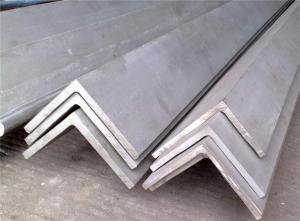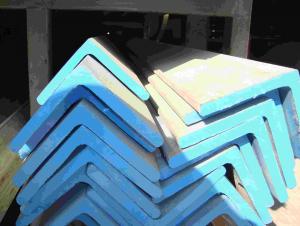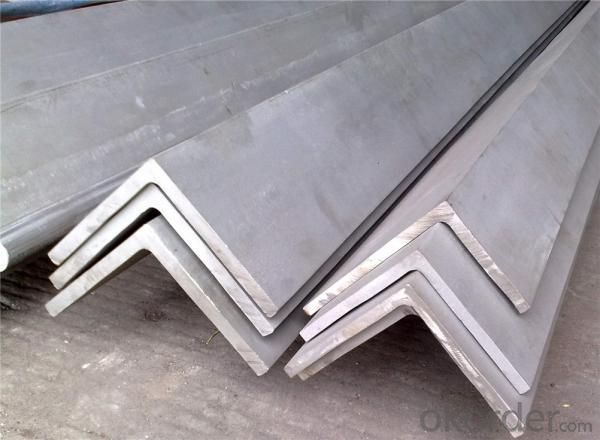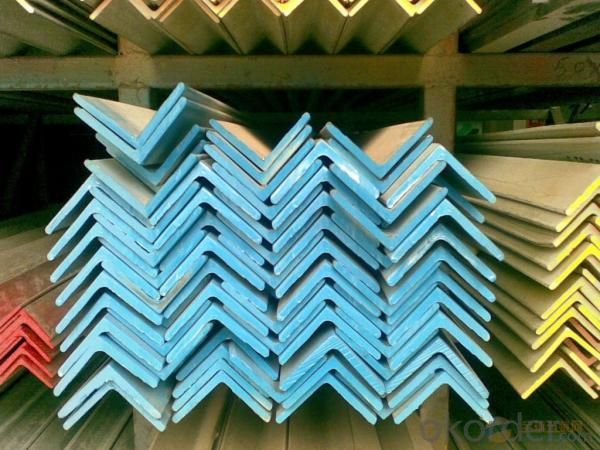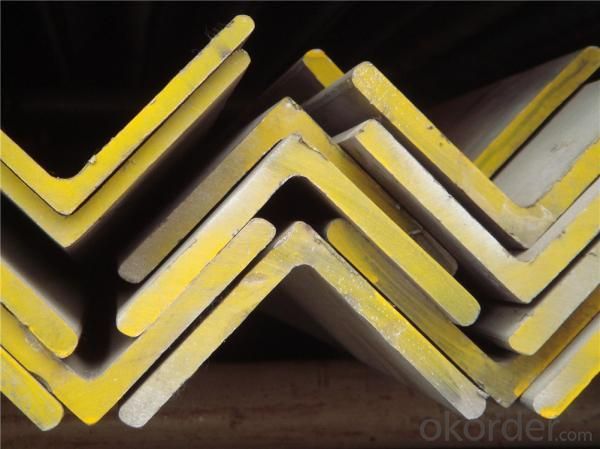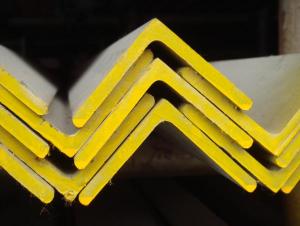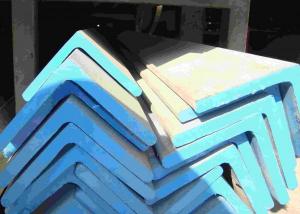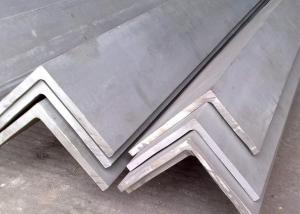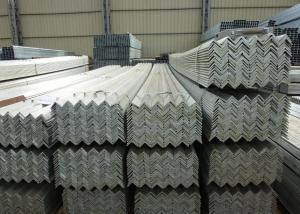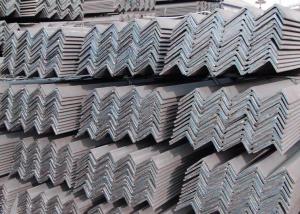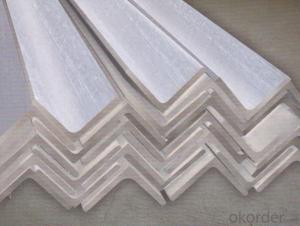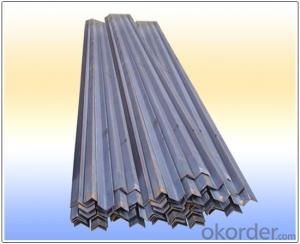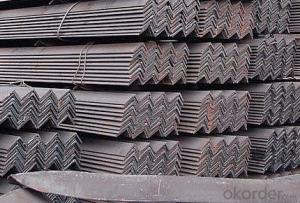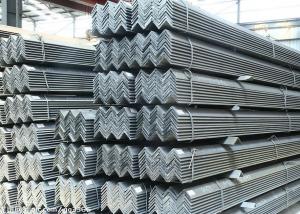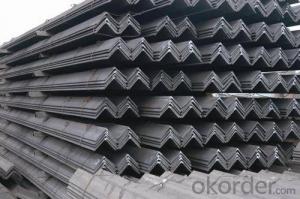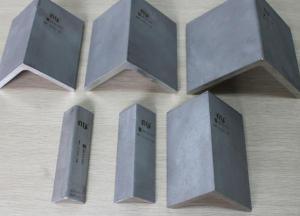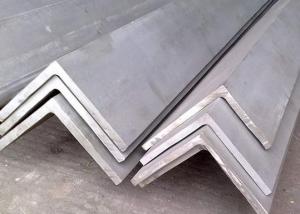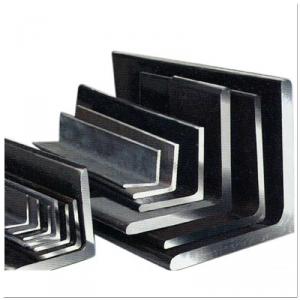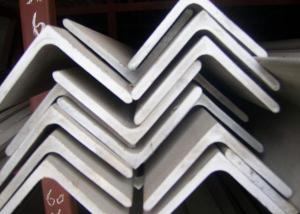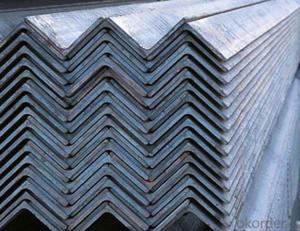High Quality Stainless Steel Angles
- Loading Port:
- Shanghai Port
- Payment Terms:
- TT or LC
- Min Order Qty:
- 5 Tons m.t.
- Supply Capability:
- 500 Tons m.t./month
OKorder Service Pledge
OKorder Financial Service
You Might Also Like
Stainless Steel Angles
1.Grade: SS200,300,400 series
2.Size: 25×25×3 mm-100×100×10mm
3.Process: HRAP
4. Length: 2-6m
5. Shape: Equal
6. Delivery: within 20 days
7. MOQ: 1 ton
8. Certificate: ISO 9001:2008, SGS
9. Package:Standard Export Packing, or put into wooden boxes according to your requirement
10. Application: Construction, Marine, Industry and so on
Name | Stainless Steel Angles | ||||||
Standard | ASTM A554, A312, A249, A269 and A270 | ||||||
Material Grade | 304,316,201,202, 316L,430 | ||||||
Length | 6m or as customers' request | ||||||
Tolerance | a) thickness: +/-0. 15mm | ||||||
| |||||||
b) Length:+/-4. 5mm - 0mm | |||||||
Surface | 180G, 320G, 400G Satin / Hairline(Matt Finish, Brush, Dull Finish) 400G, 500G, 600G or 800G Mirror finish | ||||||
Application | Decoration construction, upholstery, industry instruments | ||||||
Test | Squash test, Extended test, Water pressure test, Crystal rot test, Heat treatment, NDT | ||||||
Chemical Composition of Material |
Composition
Material | 201 | 202 | 304 | 316L | 430 | |
C | ≤0.15 | ≤0.15 | ≤0.08 | ≤0.08 | ≤0.12 | ||
Si | ≤1.00 | ≤1.00 | ≤1.00 | ≤1.00 | ≤1.00 | ||
Mn | 5.5-7.5 | 7.5-10 | ≤2.00 | ≤2.00 | ≤1.00 | ||
P | ≤0.06 | ≤0.06 | ≤0.045 | ≤0.045 | ≤0.040 | ||
S | ≤0.03 | ≤0.03 | ≤0.030 | ≤0.030 | ≤0.030 | ||
Cr | 16-18 | 17-19 | 18-20 | 16-18 | 16-18 | ||
Ni | 3.5-5.5 | 4-6 | 8-10.5 | 10-14 |
| ||
Mo |
|
|
| 2.0-3.0 |
| ||
Mechanical Property | Material Item | 201 | 202 | 304 | 316L | ||
Tensile Strength | ≥535 | ≥520 | ≥520 | ≥520 | |||
Yield Strength | ≥245 | ≥205 | ≥205 | ≥205 | |||
Extension | ≥30% | ≥30% | ≥35% | ≥35% | |||
Hardness (HV) | <253 | <253 | <200 | <200 | |||
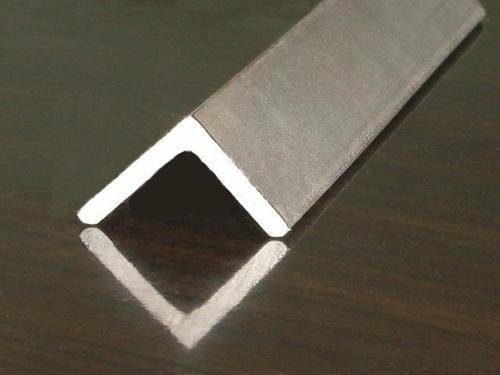
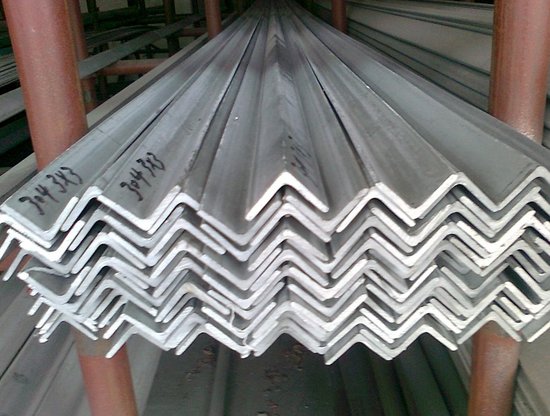
- Q: Can stainless steel angle be used in nuclear power plants?
- Indeed, stainless steel angle finds utility within nuclear power plants. This material, widely employed in such plants, owes its popularity to its exceptional resistance to corrosion, impressive durability, and ability to withstand high temperatures. It serves various purposes, including the construction of structural components, equipment, and storage containers. Specifically, stainless steel angle plays a vital role in constructing support structures, framing systems, and platforms within these power plants. Its remarkable corrosion resistance guarantees the endurance of these structures in the face of the challenging and corrosive environments characteristic of nuclear power plants. Consequently, the utilization of stainless steel angle ensures the safety and longevity of these important installations.
- Q: Can stainless steel angles be used in the production of agricultural equipment?
- Indeed, agricultural equipment production can incorporate the utilization of stainless steel angles. Renowned for its robustness, resistance to corrosion, and strength, stainless steel emerges as an ideal material for agricultural machinery that confronts adverse environmental conditions and chemical exposure. In the construction of frames, supports, and structural elements for implements like plows, cultivators, seeders, and harvesters, stainless steel angles prove to be invaluable. Notably, the high strength-to-weight ratio of these angles permits the creation of lightweight yet resilient machinery. Furthermore, stainless steel's ability to stave off rust and corrosion guarantees the equipment's uninterrupted functionality and reliability, even amidst damp and corrosive agricultural settings.
- Q: What are the packaging options for stainless steel angles during shipping?
- There are several packaging options available for stainless steel angles during shipping to ensure their protection and safe delivery. The most common packaging method is using wooden crates or pallets to secure the angles in place. These crates or pallets are designed to withstand the rigors of transportation and provide a stable base for stacking and handling. Another packaging option is using corrugated cardboard boxes to individually pack each stainless steel angle. These boxes are sturdy and provide cushioning to protect the angles from any potential impact or damage during transportation. In addition to wooden crates and cardboard boxes, some suppliers may also use shrink wrap or stretch film to further secure the angles and prevent any movement or shifting during transit. This method is especially useful for smaller quantities or when shipping loose angles. Furthermore, for larger or more delicate stainless steel angles, foam or bubble wrap may be used to provide extra protection. These materials act as a cushioning layer, absorbing shocks and preventing scratches or dents. Lastly, it is essential to ensure proper labeling and marking on the packaging to indicate the fragile nature of the stainless steel angles. This helps the handling personnel to exercise caution and prioritize careful handling. Overall, the choice of packaging option for stainless steel angles during shipping depends on various factors such as the quantity, size, and fragility of the angles. It is crucial to work with a reliable supplier who understands these requirements and can provide appropriate packaging solutions tailored to the specific needs of the angles being shipped.
- Q: Can stainless steel angle be used in water treatment plants?
- Yes, stainless steel angle can be used in water treatment plants. Stainless steel is highly resistant to corrosion, making it ideal for use in environments with high levels of moisture and chemicals, such as water treatment plants. It does not rust or corrode like other metals, ensuring the longevity and durability of the structure. Additionally, stainless steel is known for its hygienic properties, as it is easy to clean and does not harbor bacteria or contaminants. Its strength and structural integrity make it suitable for various applications in water treatment plants, including piping, tanks, and supports. Overall, stainless steel angle is a reliable and cost-effective choice for use in water treatment plants.
- Q: How do stainless steel angles perform in acidic environments?
- Stainless steel angles are known for their excellent corrosion resistance, which makes them highly suitable for use in acidic environments. The presence of chromium in stainless steel helps to form a passive layer on the surface, which acts as a protective barrier against corrosive agents, including acids. This passive layer prevents further oxidation and degradation of the stainless steel, ensuring its durability and longevity in acidic conditions. In acidic environments, stainless steel angles exhibit minimal to no signs of corrosion, making them a reliable choice for applications such as chemical processing plants, wastewater treatment facilities, and food processing industries, where exposure to acids is common. The high resistance to corrosion also makes stainless steel angles suitable for outdoor applications, where they may be exposed to acid rain or other environmental factors. It is important to note that the performance of stainless steel angles in acidic environments can vary depending on the specific grade of stainless steel used. There are different grades of stainless steel available, each with its own composition and corrosion resistance properties. Therefore, it is essential to select the appropriate grade of stainless steel that suits the specific requirements of the acidic environment. Regular cleaning and maintenance are also necessary to ensure the optimum performance of stainless steel angles in acidic environments. Proper cleaning techniques and the use of compatible cleaning agents can help remove any contaminants or deposits that might compromise the passive layer on the stainless steel surface. Overall, stainless steel angles are an excellent choice for applications in acidic environments due to their superior corrosion resistance, durability, and ability to maintain their structural integrity even in harsh conditions.
- Q: How do stainless steel angles contribute to the overall efficiency of a structure?
- There are several reasons why stainless steel angles are crucial for enhancing the overall efficiency of a structure. Firstly, they offer exceptional strength and durability, making them ideal for structural applications. Their high resistance to corrosion, rust, and heat ensures the longevity of the structure, even in harsh environmental conditions. Furthermore, stainless steel angles provide structural stability and support, particularly in load-bearing applications. Their L-shaped design allows for the even distribution of weight, reducing stress on other structural elements and preventing deformations or collapses. This makes them essential in constructing bridges, buildings, and other infrastructure. Moreover, stainless steel angles make installation easier due to their precise angles and standardized dimensions. This seamless integration saves time and labor costs. They can also be easily joined with different components and materials, further contributing to efficient construction and minimizing the need for additional support structures. In addition, stainless steel angles offer aesthetic benefits by providing clean lines and a modern appearance to the structure. Their sleek and polished finish enhances the overall visual appeal, making them a popular choice in architectural designs. This not only adds value to the structure but also attracts potential occupants or customers. Lastly, stainless steel angles contribute to the overall sustainability of a structure. They are highly recyclable, reducing the demand for new resources. This aligns with the growing emphasis on sustainable building practices, making stainless steel angles a preferred choice for environmentally conscious projects. In conclusion, stainless steel angles significantly enhance the performance and longevity of a structure by providing strength, durability, stability, ease of installation, aesthetic appeal, and sustainability. Their versatility and ability to withstand various environmental conditions make them a crucial component in enhancing the overall efficiency of a structure.
- Q: Are stainless steel angles suitable for manufacturing tanks?
- Yes, stainless steel angles are suitable for manufacturing tanks. Stainless steel is a highly durable and corrosion-resistant material, making it an ideal choice for tank manufacturing. The angles provide structural support and stability to the tank, ensuring it can withstand the pressures and forces it may be subjected to. Additionally, stainless steel has excellent hygiene properties, making it suitable for tanks used in industries such as food and beverage, pharmaceuticals, and chemical processing. Overall, stainless steel angles are a reliable and efficient option for manufacturing tanks.
- Q: What are the different types of finishes available for stainless steel angles?
- There are several types of finishes available for stainless steel angles, including brushed, mirror, mill, and bead blasted finishes.
- Q: What are the different ways to join stainless steel angles?
- Depending on the desired strength of the joint and the specific application, there are various ways to connect stainless steel angles. Welding, bolting, adhesive bonding, and mechanical fastening are some common methods. 1. To create a strong and permanent joint suitable for structural applications, stainless steel angles can be joined through welding. TIG, MIG, or spot welding techniques can be used. However, this method requires skilled labor and specialized equipment. 2. If adjustability or flexibility is required, bolting is a suitable method. Stainless steel angles can be connected using bolts, nuts, and washers. This allows for easy disassembly and reassembly when necessary. 3. For a clean and visually pleasing joint without visible fasteners, adhesive bonding can be used. Industrial-grade adhesives are used to bond the stainless steel angles together. This method is particularly useful when welding or drilling holes is not feasible or desired. 4. Mechanical fastening techniques such as riveting or clinching can also be used to join stainless steel angles. Riveting involves using a rivet gun to secure the angles with a rivet, while clinching deforms the material to create a permanent joint. Mechanical fastening is a versatile method suitable for various applications. When selecting the appropriate method, it is important to consider factors such as load-bearing capacity, corrosion resistance, and aesthetic requirements. Seeking advice from a professional or engineer is recommended to ensure the chosen method meets the specific project needs.
- Q: Are stainless steel angles resistant to nitric acid?
- Yes, stainless steel angles are generally resistant to nitric acid due to the high levels of chromium present in their composition, which forms a passive oxide layer on the surface, protecting the steel from corrosion caused by nitric acid.
1. Manufacturer Overview
| Location | Jiangsu,China |
| Year Established | 2002 |
| Annual Output Value | Above US$ 8 Million |
| Main Markets | China, East Asia, |
| Company Certifications | ISO9001:2000; |
2. Manufacturer Certificates
| a) Certification Name | |
| Range | |
| Reference | |
| Validity Period |
3. Manufacturer Capability
| a) Trade Capacity | |
| Nearest Port | Shanghai |
| Export Percentage | 40% |
| No.of Employees in Trade Department | 30 People |
| Language Spoken: | English;Chinese |
| b) Factory Information | |
| Factory Size: | Above 26,000 square meters |
| No. of Production Lines | Above 6 |
| Contract Manufacturing | OEM Service Offered;Design Service Offered |
| Product Price Range | Average |
Send your message to us
High Quality Stainless Steel Angles
- Loading Port:
- Shanghai Port
- Payment Terms:
- TT or LC
- Min Order Qty:
- 5 Tons m.t.
- Supply Capability:
- 500 Tons m.t./month
OKorder Service Pledge
OKorder Financial Service
Similar products
Hot products
Hot Searches
Related keywords
